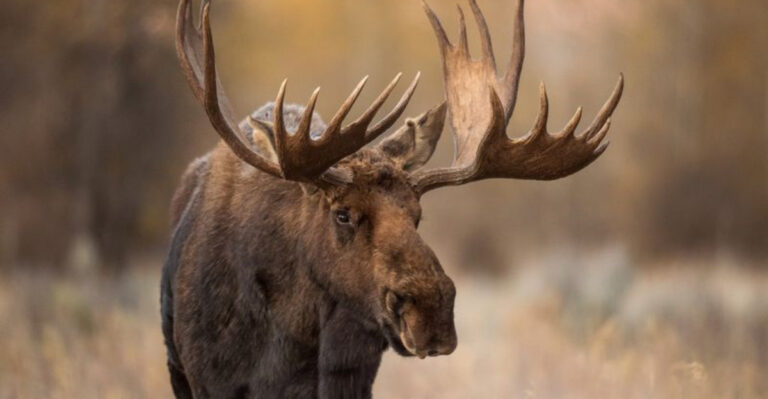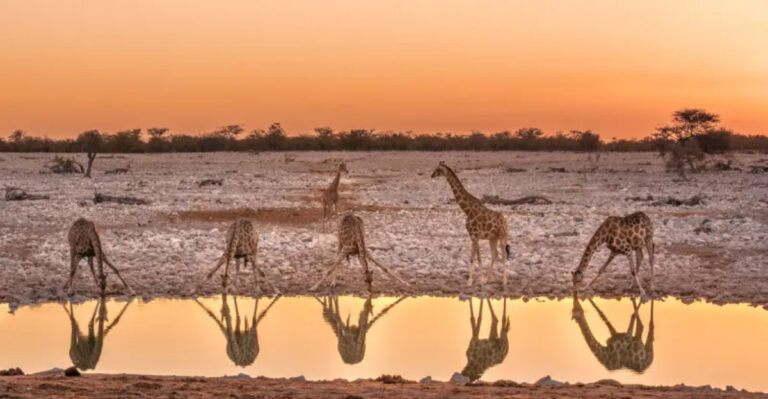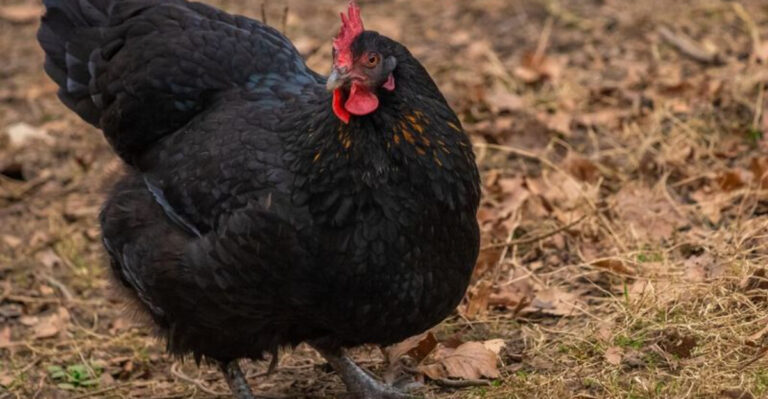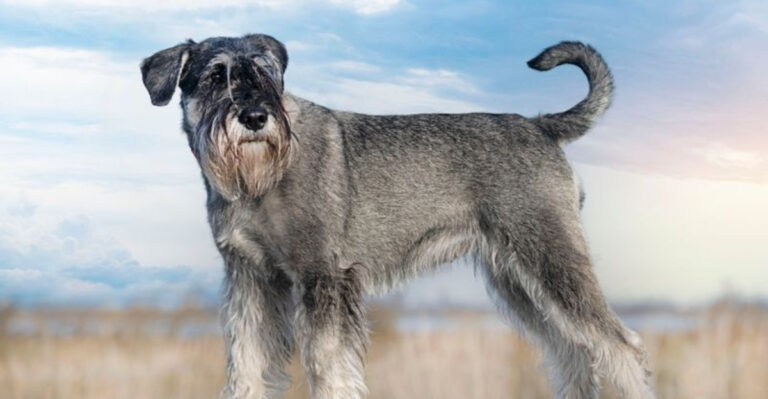These Are The 15 Heaviest Animals On The Planet
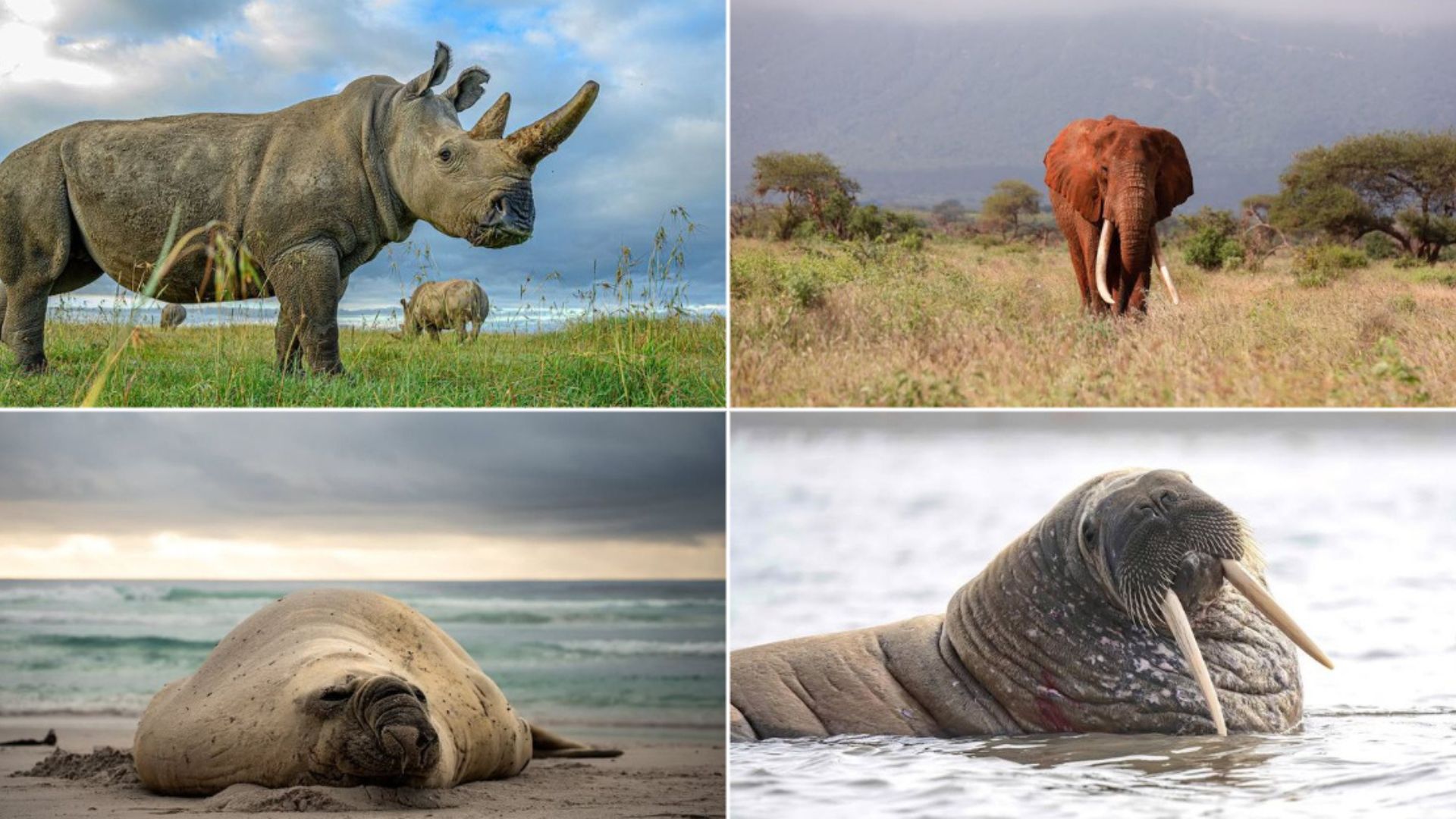
In the world of colossal creatures, size does matter! These gigantic beings leave us in awe with their massive weights and towering statures.
As we explore some of the heaviest animals on the planet, prepare to be amazed by these natural wonders. From the depths of the ocean to the vast African savannahs, each animal showcases unique features that contribute to its hefty status.
Join us on this fascinating journey into the realm of nature’s true heavyweights, where every entry is more astonishing than the last!
1. Blue Whale
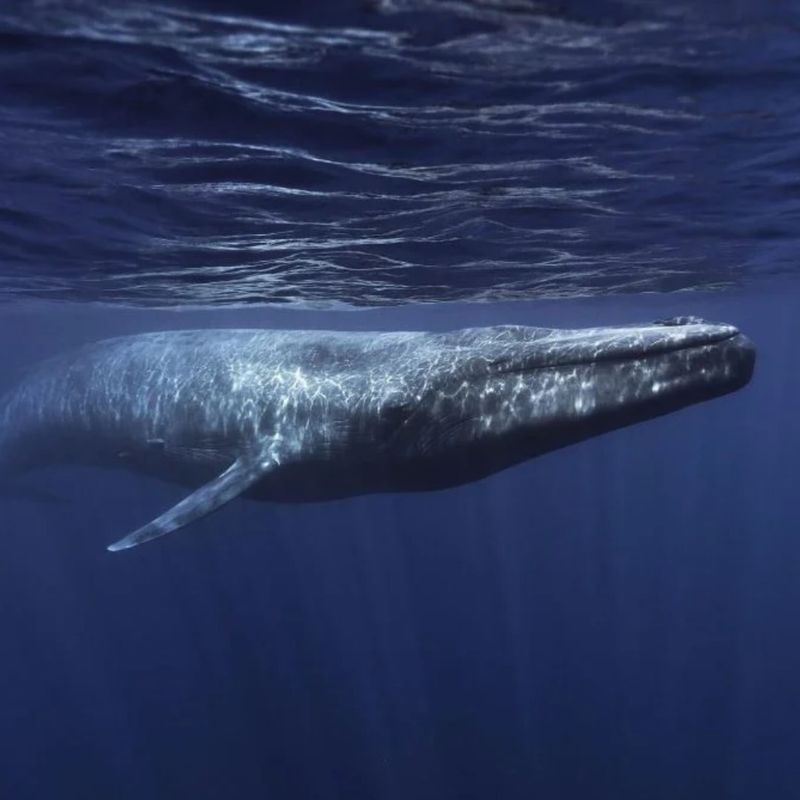
The blue whale holds the title for the biggest animal to ever exist on planet Earth. Weighing up to 200 tons, it’s like squeezing 33 elephants into one gigantic marine mammal! The blue whale’s heart alone is the size of a small car, and when it comes to length, it’s a sea monster stretching up to 100 feet long.
Living in the ocean’s vastness, the blue whale welcomes the challenge of gulping down 4 tons of krill a day – imagine that as a daily seafood buffet! Their deep, echoing calls can travel miles underwater, making them the Pavarotti of the sea.
Despite their colossal size, blue whales glide gracefully in the water, reminding us that even giants can be gentle. Catching a glimpse of one in the wild is like spotting a mythical creature, leaving spectators utterly speechless.
2. African Elephant
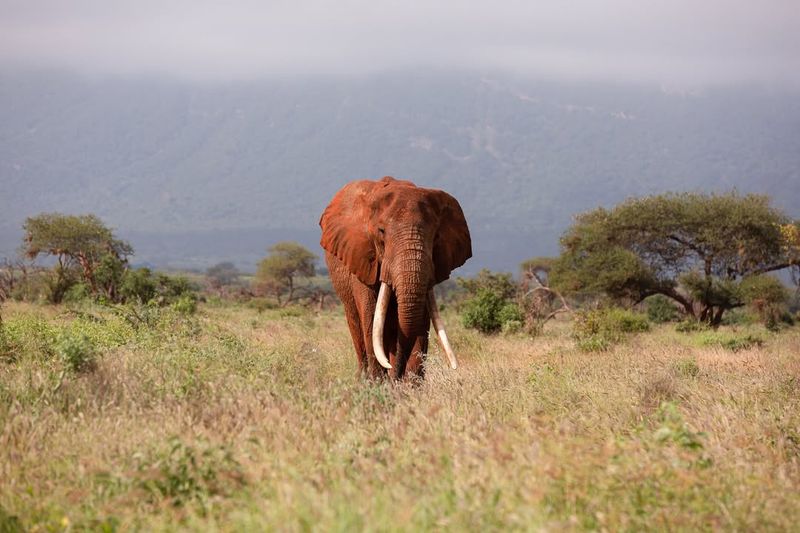
Topping the charts on land, the African elephant is a true heavyweight champion, tipping the scales at up to 14,000 pounds. These gentle giants roam the savannahs, using their impressive trunks to forage and communicate across vast distances. Their ears? Not just for hearing, but also for keeping cool in the hot African sun.
Elephants are known for their intelligence and strong social bonds, often forming close-knit family groups that can span generations. Their trunks are a marvel of engineering, capable of delicate maneuvers like picking up a peanut or delivering a powerful blow.
With a gestation period of nearly two years, elephant calves are born into a rich tapestry of life lessons and family ties. As cornerstones of their ecosystem, they play a crucial role in shaping their environment, ensuring that the savannah remains a bustling, balanced habitat.
3. Colossal Squid
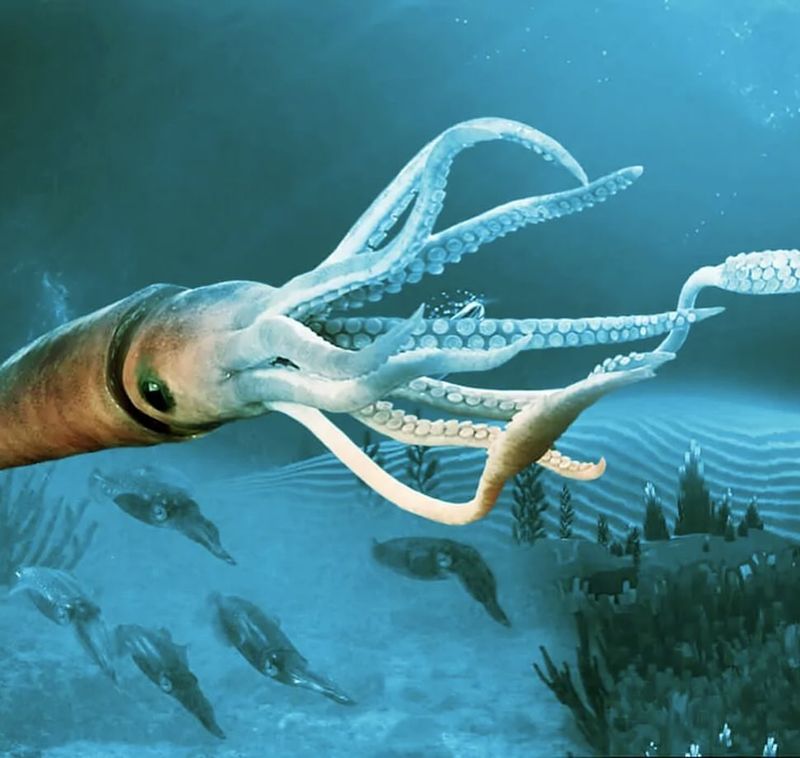
Deep beneath the waves lurks the enigmatic colossal squid, a creature so elusive it could star in its own deep-sea thriller. With eyes the size of dinner plates, they navigate the pitch-black ocean depths with ease. Weighing up to 1,500 pounds, they are not just big in name but in nature too.
These mysterious mollusks sport tentacles lined with sharp hooks, a feature that puts them squarely in the ‘you don’t want to mess with this’ category. Yet, despite their awe-inspiring size and features, much about their lifestyle remains a mystery.
Scientists are still unraveling the secrets of colossal squids, making each discovery feel like unlocking a chapter of an ancient maritime legend. If you’re lucky, perhaps one day, a glimpse of this giant will emerge from the ocean’s depths.
4. Hippopotamus
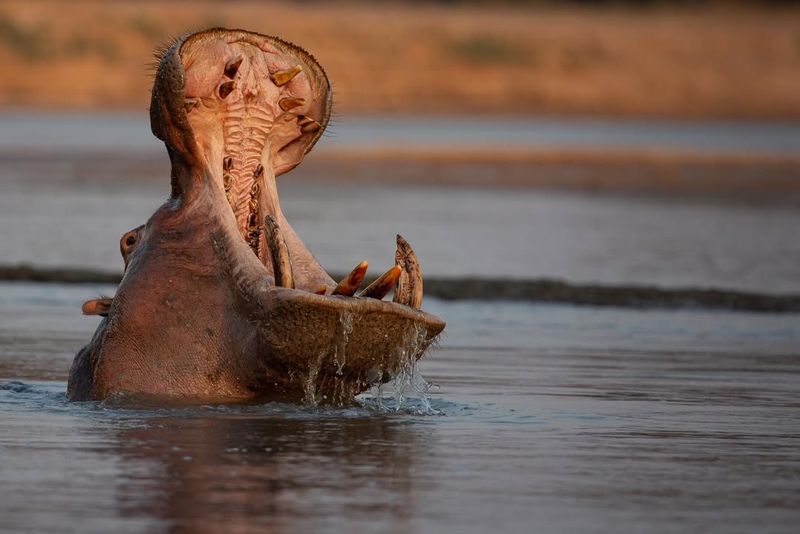
The hippopotamus may seem like a gentle river-dweller, but beneath its placid exterior lies a true heavyweight. Weighing up to 9,900 pounds, these semi-aquatic mammals are one of Africa’s most formidable creatures. With a mouth that can open up to 180 degrees, they are more than capable of making a big impression.
Hippos spend much of their time submerged in water, emerging at dusk to graze on the lush riverbanks. Their large, barrel-shaped bodies are buoyant, making them surprisingly graceful swimmers despite their size.
A hippo’s skin secrets an oily red substance, which acts as both a sunscreen and an antibiotic. This unique feature gives them a slightly mythical aura, almost as if they’re rubbing on magical lotion straight out of a fantasy novel.
5. Giraffe
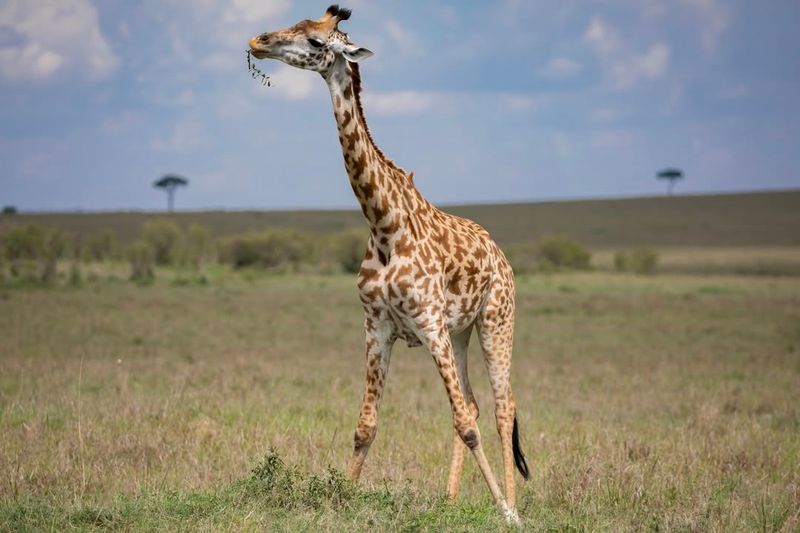
Towering above the savannah, the graceful giraffe is a heavyweight champ in the neck category. While they might not win any weight competitions, weighing in at 2,600 pounds is nothing to scoff at. Their elongated necks allow them to reach the tops of trees, providing them with a buffet of leaves that other creatures can only dream of.
Giraffes are social butterflies, often found in herds where they interact with each other in complex ways. Their spots are unique to each individual, much like human fingerprints, allowing them to stand out in the crowd.
Despite their height, giraffes are surprisingly swift, capable of outrunning many predators. Their long strides can cover several meters in a single bound, making them a majestic sight as they gallop across the plains.
6. Saltwater Crocodile
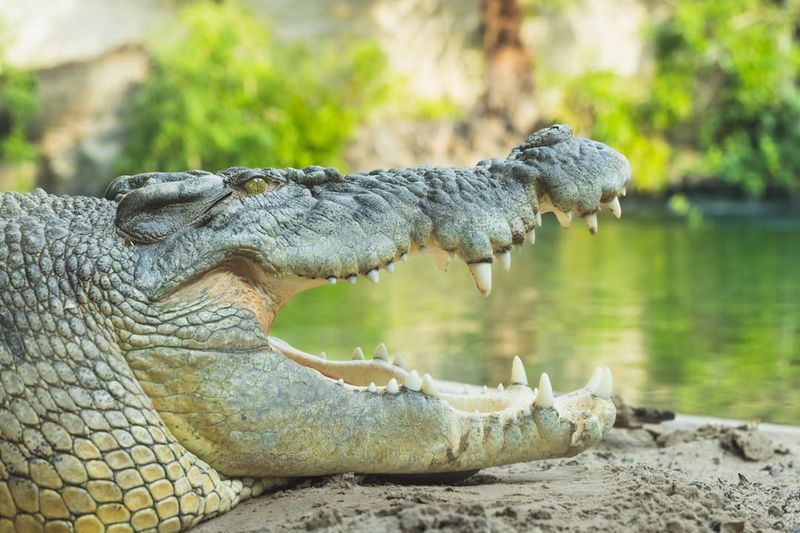
Saltwater crocodiles lord over the waters as one of the heaviest reptiles, weighing up to 2,200 pounds. Their armored bodies and powerful tails make them formidable predators, often lurking in the shadows ready to strike.
These ancient reptiles have a lineage dating back millions of years, giving them an almost prehistoric air. As ambush predators, they have developed a truly efficient hunting strategy, using the element of surprise to capture their prey.
Despite their fearsome reputation, crocodiles play a crucial role in their ecosystems, maintaining the balance of species and preventing overpopulation of certain aquatic animals. Encountering one is a reminder of the wild, untamed parts of our world.
7. Kodiak Bear
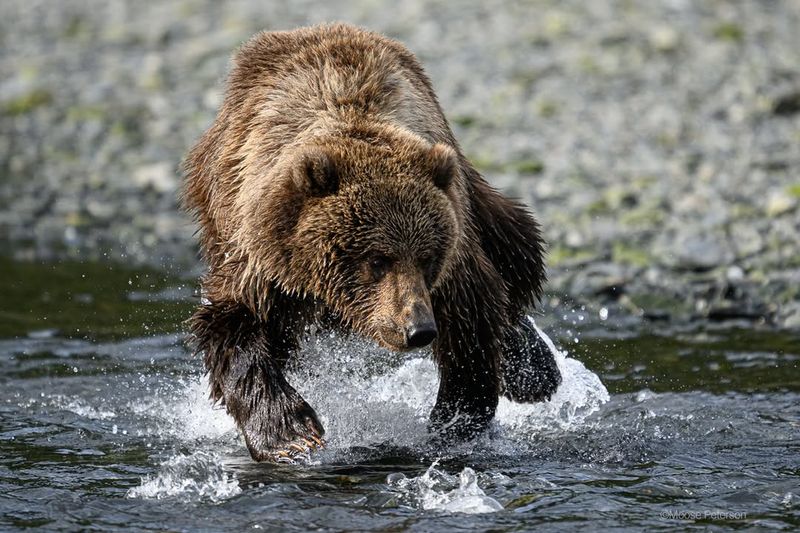
The Kodiak bear, hailing from the remote archipelago of Alaska, stands as one of the largest bears in the world. Weighing in at a whopping 1,500 pounds, these mighty creatures are a force of nature during the salmon-rich summer months.
These bears are the kings of their domain, their hefty frames and towering stature making them a sight to behold. With a diet rich in fish and berries, they pack on the pounds to prepare for the long winter hibernation.
Despite their impressive size, Kodiak bears are known for their solitary nature, preferring to roam the wilderness alone. However, during the spawning season, they gather in numbers to feast, providing a majestic spectacle of nature’s grandeur.
8. Southern Elephant Seal
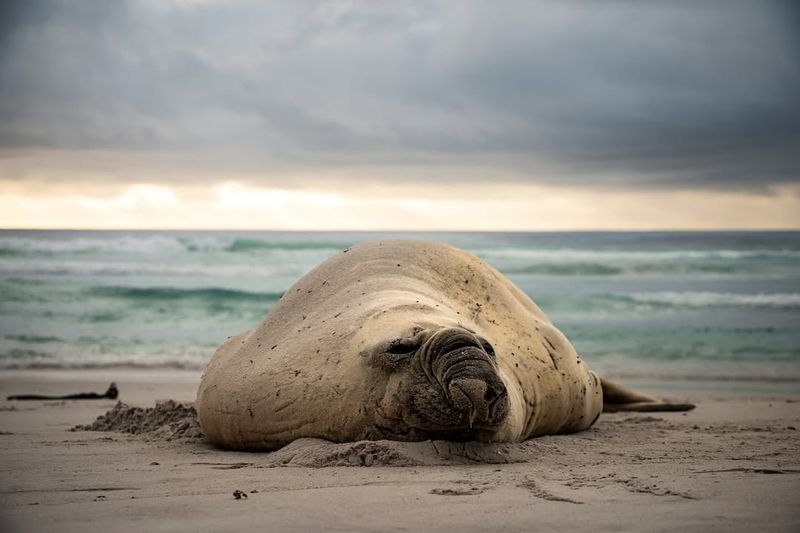
When it comes to seals, the Southern elephant seal is the heavyweight champ, tipping the scales at a massive 8,800 pounds. Crowned with an inflatable snout, these seals are truly a sight to behold, especially during the breeding season.
These marine giants spend a significant portion of their lives at sea, diving deep into the ocean to hunt for squid and fish. Their blubber acts as insulation, keeping them warm in the freezing Antarctic waters.
On land, male Southern elephant seals engage in fierce battles, using their size and strength to establish dominance. Watching these titanic tussles unfold is like witnessing a clash of titans, each vying for supremacy in the harsh polar environment.
9. Gaur
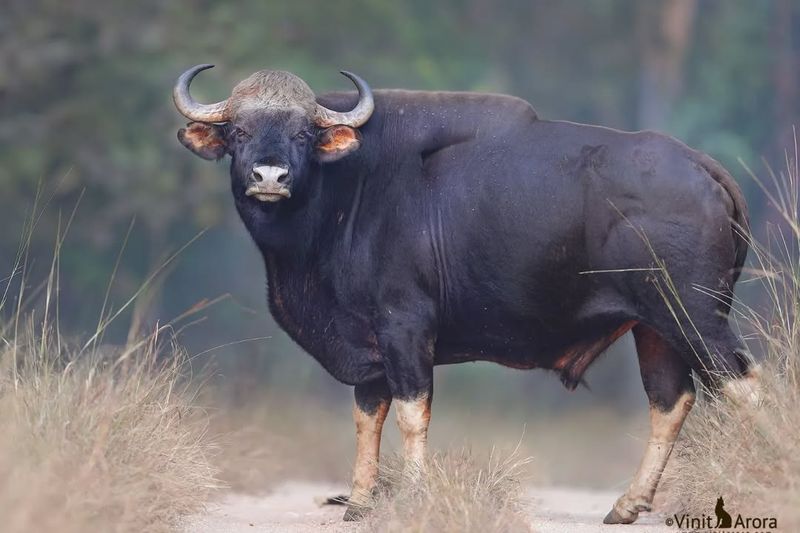
The gaur, also known as the Indian bison, is the heavyweight champion of the bovine world. Weighing up to 2,200 pounds, these massive creatures command respect in the wild forests of India and Southeast Asia.
Gaurs are known for their muscular builds and impressive horns, which can stretch over four feet long. Their sturdy legs and broad chests are perfectly adapted for traversing the dense forest undergrowth.
Despite their size, gaurs are surprisingly agile, able to sprint short distances when threatened. They live in herds, often led by an experienced female, and are known for their gentle nature unless provoked. Encountering a gaur is like coming face-to-face with nature’s very own tank.
10. Narwhal
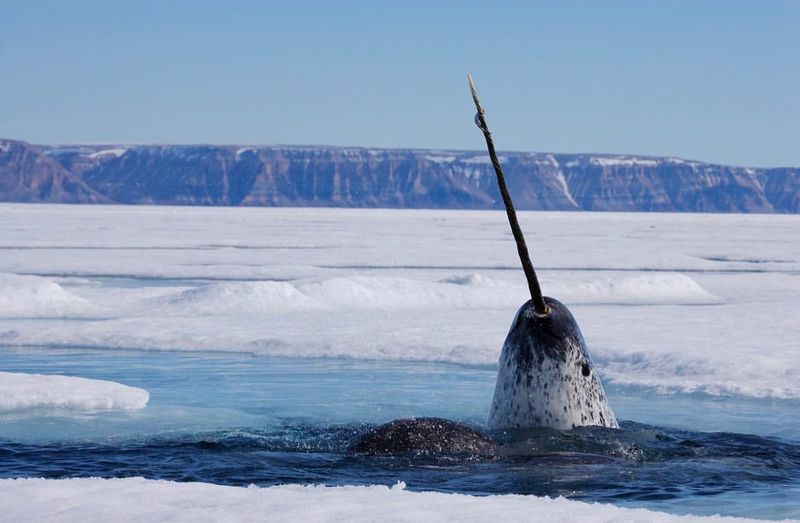
The narwhal, often dubbed the ‘unicorn of the sea,’ enchants with its long, spiraled tusk. Weighing up to 3,500 pounds, these Arctic whales are more than just mythical creatures—they’re real giants of the ocean.
Their tusks, which can grow up to 10 feet long, are actually elongated teeth, filled with sensitive nerve endings. This unique feature allows them to sense their surroundings, adding a touch of magic to their already mysterious nature.
Narwhals thrive in the icy Arctic waters, often traveling in pods and using their tusks in playful sparring matches. Observing a narwhal in its natural habitat is like gazing into a fairy tale, where reality and fantasy intertwine.
11. American Bison
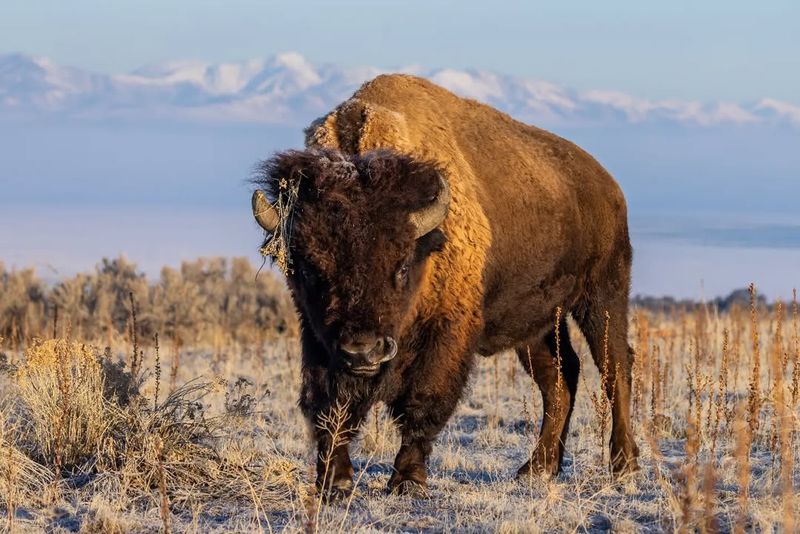
Once roaming the Great Plains in vast herds, the American bison is a symbol of strength and resilience. Weighing up to 2,000 pounds, these beasts are the heaviest land animals in North America.
Their shaggy coats and massive heads are not just for show; they provide insulation during the harsh winters and serve as formidable tools for plowing through snow to find food. Despite their bulk, bison can run at speeds of up to 40 miles per hour.
These majestic creatures play a vital role in their ecosystem, shaping the landscape through grazing and creating habitats for other wildlife. Their resurgence from near extinction is a testament to conservation efforts, ensuring their presence on the prairies for generations to come.
12. Bactrian Camel
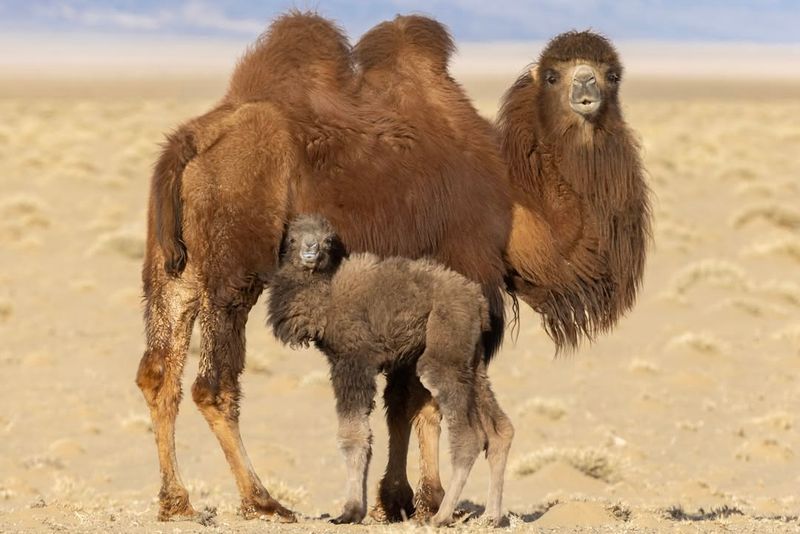
The Bactrian camel, with its distinctive two humps, is a master of survival in the harsh desert landscapes of Central Asia. Weighing up to 1,800 pounds, these resilient creatures are perfectly adapted to endure extreme temperatures and sparse resources.
Their humps store fat, not water, contrary to popular belief, providing them with energy during long desert treks. With thick fur that changes according to the season, they can withstand both scorching heats and freezing colds.
Bactrian camels have been invaluable to nomadic cultures, serving as reliable transportation and companionship across vast distances. Their presence in the desert is a reminder of nature’s capacity to adapt and thrive in even the most unforgiving environments.
13. Walrus
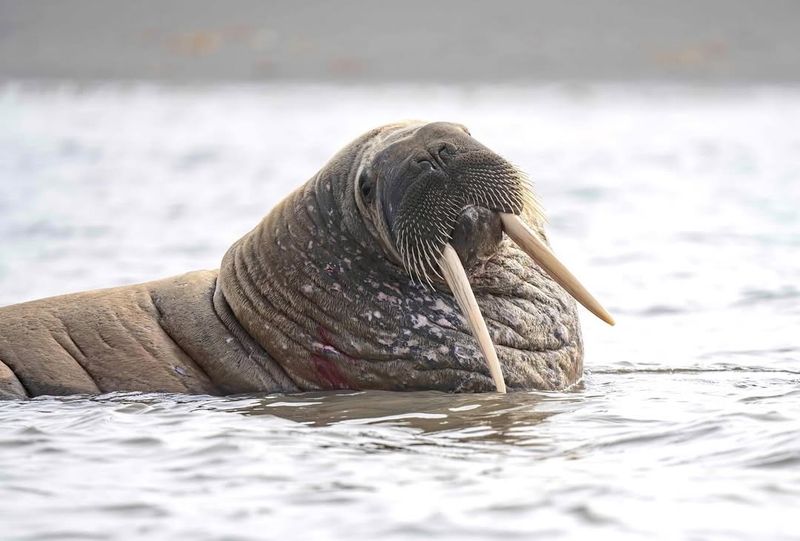
The walrus is a true heavyweight of the Arctic, tipping the scales at up to 4,400 pounds. These massive pinnipeds are instantly recognizable by their long tusks and whiskered faces, which add to their endearing charm.
Walruses use their tusks for a variety of purposes, from hauling themselves onto ice floes to digging for clams on the ocean floor. These social creatures are often found in large groups, where they engage in playful interactions.
Despite their blubbery appearance, walruses are agile swimmers, capable of diving to great depths in search of food. Their presence in the Arctic is a testament to the resilience and adaptability of life in one of the planet’s harshest climates.
14. White Rhinoceros
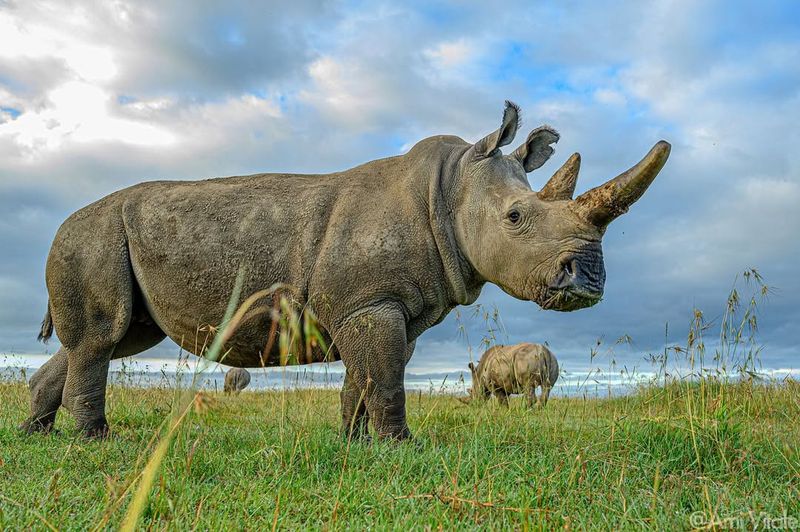
The white rhinoceros is a heavyweight icon of the savannah, weighing up to 5,000 pounds. With its impressive horn and thick, armored skin, it strikes a commanding presence on the African plains.
These gentle giants are primarily grazers, spending their days munching on grasses and wallowing in mud baths to cool off and protect their skin from the sun. Their horns, made of keratin, are used for defense and social interactions.
Conservation efforts have been crucial in protecting white rhinos from poaching, ensuring their continued presence in the wild. Observing a white rhino in its natural habitat is a humbling experience, a reminder of the beauty and fragility of the animal kingdom.
15. Sperm Whale
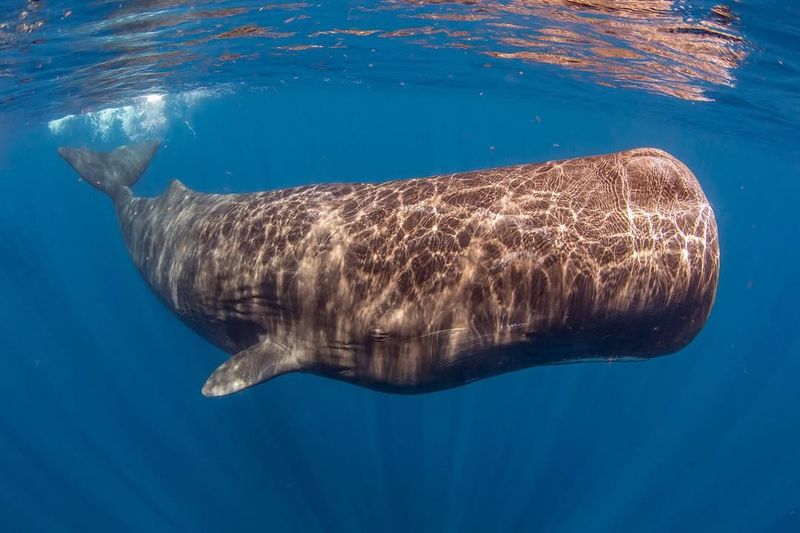
The sperm whale is a deep-sea heavyweight, weighing up to 90,000 pounds and measuring up to 70 feet in length. Known for their massive heads and deep dives, they are the ocean’s enigmatic giants.
These whales have the largest brain of any animal, a fact that adds to their mystique. They dive to incredible depths in search of squid, using echolocation to navigate the dark ocean depths.
Sperm whales are social animals, often found in pods where they communicate through clicks and whistles. Their presence in the ocean is a reminder of the vastness and mystery that lies beneath the waves, where giants roam freely.

